Pig farming or hog farming is a branch of animal husbandry, and it is the practice of raising domestic pigs as livestock. Pigs are raised mainly for food (such as pork, bacon, and gammon) and skins. Proper housing and equipment for pig rearing are essential to provide shelter against bad weather, prevent diseases, control parasites, and save labor. Pig farming will provide seasonally employed rural farmers employment opportunities and additional income to improve their living standards.
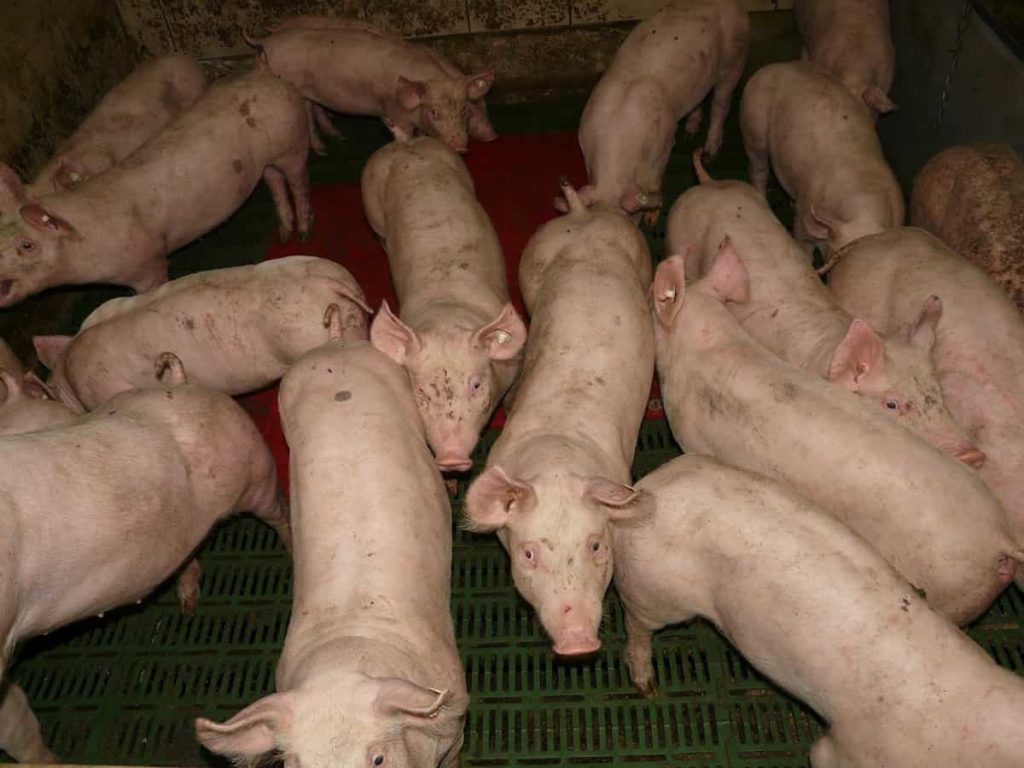
In the European Union, France is the third-largest pork producer, with 2.2 million tons of pork production. France exports 30% of its production; the volume of imports is huge: up to 25% of the pork consumed by the French is imported. Brittany is France’s largest pork producer. Let’s find out more information on pig farming in France.
Choose an appropriate land
Choose the suitable land should be based on the availability of the necessary facilities for raising pigs, as described below;
- Available fresh and clean water.
- Noise-free and calm area.
- Market proximity to buying essential medicines, vaccines, and farm products.
- Preferably rural land due to accessible and affordable availability of labor.
- A high browsing spaces.
- An advanced market transportation system.
- Provision of veterinary service.
Pig production in France
More than 75% of France’s swine production is concentrated on livestock farms in the French Great West, particularly in Brittany and Pays de la Loire. During the last year, the number of pigs was about 12.8 million, of which 1 million were sows. In production figures, annual meat production reached 2.2 million tons, representing 9% of the European production, making France the third-largest pork producer in Europe.
Pig Shelter
Identify a clean environment to establish a shelter for your pigs. To become a successful pig farmer, the selected area must be free from pollution. The site should make it easier to practice waste management as it can be dangerous for pigs. Design a pig house with lamps to provide warmth in the cold and light at night. Clean the pig house regularly to make it viable for pig farming. Pigs gain weight faster with clean housing, so there is a lot of profit in the long run.
In case you missed it: Earning 20 Lakh Per Year from Raising Pigs – A Success Story of a Pig Farmer
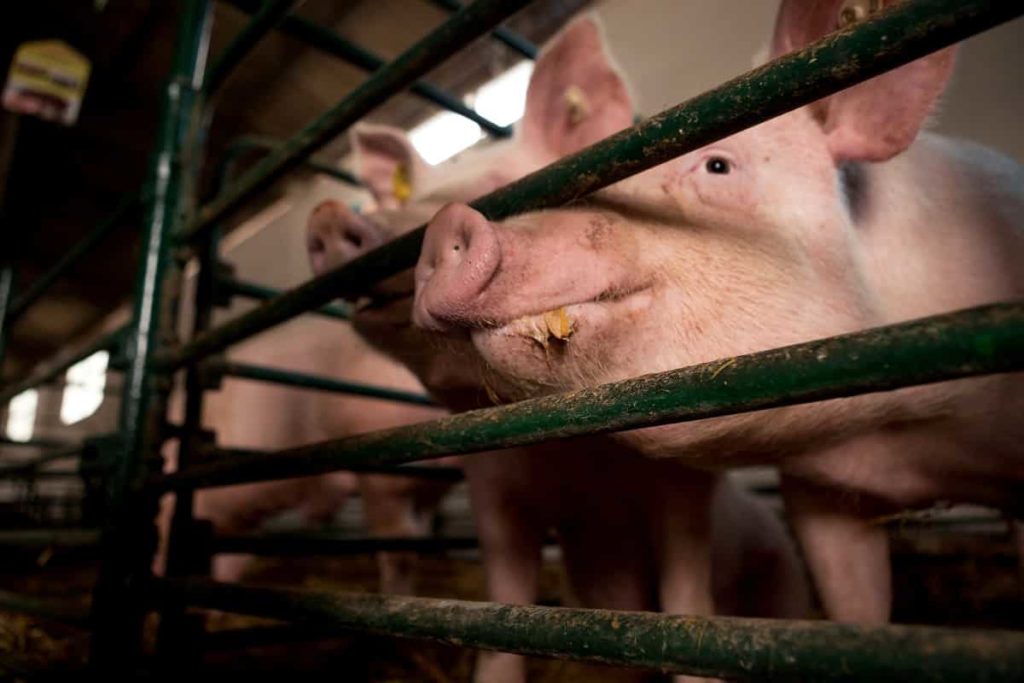
Choice of breeding stock
It is one of the essential characteristics that need to be considered in the development of a good sow herd is;
- The size of the litter
- The strength of the litter and the vigour
- Milking ability
- Temperament
- Feed performance, fertility, and selection of individual animals from the herd are more important than choosing a particular breed.
Every producer should buy his animal from a reliable, disease-free herd and get maximum information about the animals while setting up his herd. Once the herd is established, the choice of gilt and pig for replacement in the breeding herd should be based on variety and performance.
Care and management of pregnant animals
The sow’s gestation period is between 109 and 120 days and, on average, 114 days. Pregnant animals should be kept in groups in separate enclosures and should not be mixed with new animals to avoid fighting, which can sometimes lead to miscarriage. It is also advisable to get pregnant glands and sows in separate groups during pregnancy.
Approximately 3 m2 of the dry house should be available for each sow. Pregnant animals should be allowed to move free-range or in any pasture every morning if available. The pasture area is considered clean if the crop has been harvested.
Feed the pigs effectively
Feeding pigs is an essential aspect of commercial farming. The overall growth rate and the pig’s health depend very much on the nutritional level of the food. In pig farming, the main ingredients of the diet include Oats, Wheat, Rice, Cereals, Millet, Maize, and other millets. Most economic ingredients should be selected. Like;
In case you missed it: Common Mistakes in Pig Farming: For First Time Pig Owners
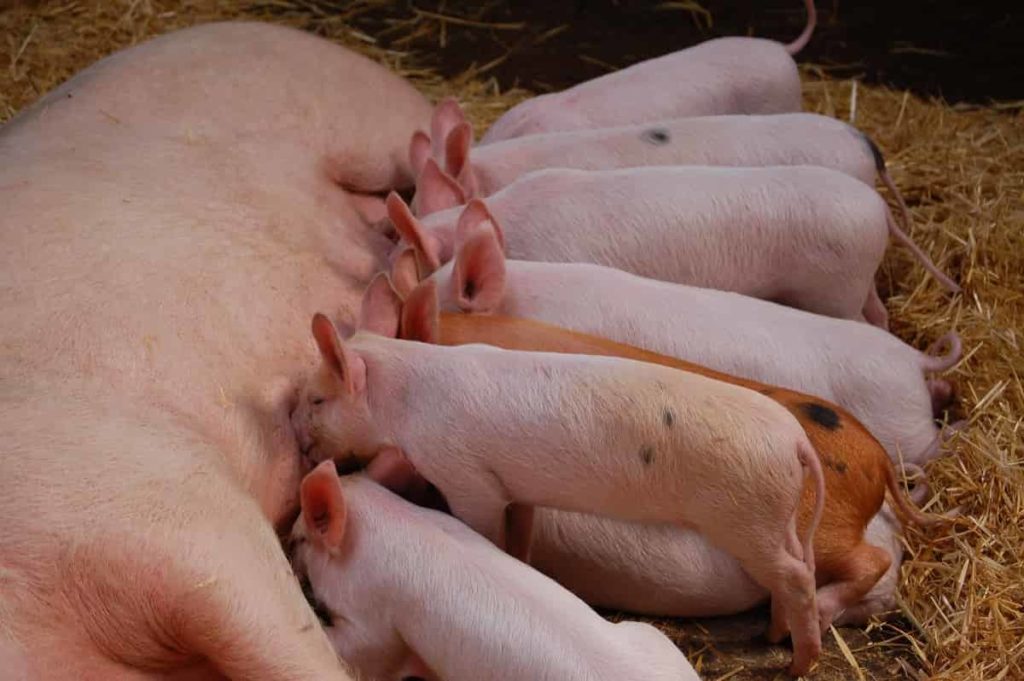
- The main ingredients should be cereals – Maize, Millet, Oats, Other Millets, Wheat, and Rice.
- Protein Supplements – Oil cakes and fish meat and meat foods
- No vitamin supplements are necessary if the pig is allowed to pasture or fresh green legumes are fed. Vitamin B12 supplementation will be required if animal protein is not given more or less.
- Mineral supplements should be provided.
Ensure proper care and management
You must ensure proper care of your pigs and protect them from various diseases and health hazards. In addition, some male pigs may be castrated at 3-4 weeks of age. It would help if you feed the sow with nutritious food, especially during lactation, and carefully raise pigs, pigs, and other pregnant sows. To keep swine fever at bay, vaccinate pigs within 2-4 weeks of age. Also, don’t let visitors roam the farm unnecessarily to keep the pig safe.
Pig diseases prevention and control
For controlling swine fever, pigs should be vaccinated at 2-4 weeks. All small pigs should be vaccinated against swine fever during weaning as a routine measure. Pigs purchased for the farm should be purchased from a disease-free herd. Newly purchased pigs should be kept separate from other animals for three to four weeks. Remember that, no visitors are allowed to visit the pig farm. The houses for pig farming are kept empty for three to four weeks to destroy the disease-causing microorganisms.
Pig breeds originated in France
Gascon pig
Gascon lives in the foothills of the Pyrénées Mountains in southwestern France. In the Midi-Pyrénées region, Gascon survives as the oldest breed of Pig in France. Despite being endangered, it has many valuable properties. Like most older breeds, it is prone to becoming very fat, but it is strong, hardy, and tolerant of hot weather. The sows are prolific, and there is a good milk supply for their litter.
In case you missed it: Pig Diseases, Symptoms, and Treatment
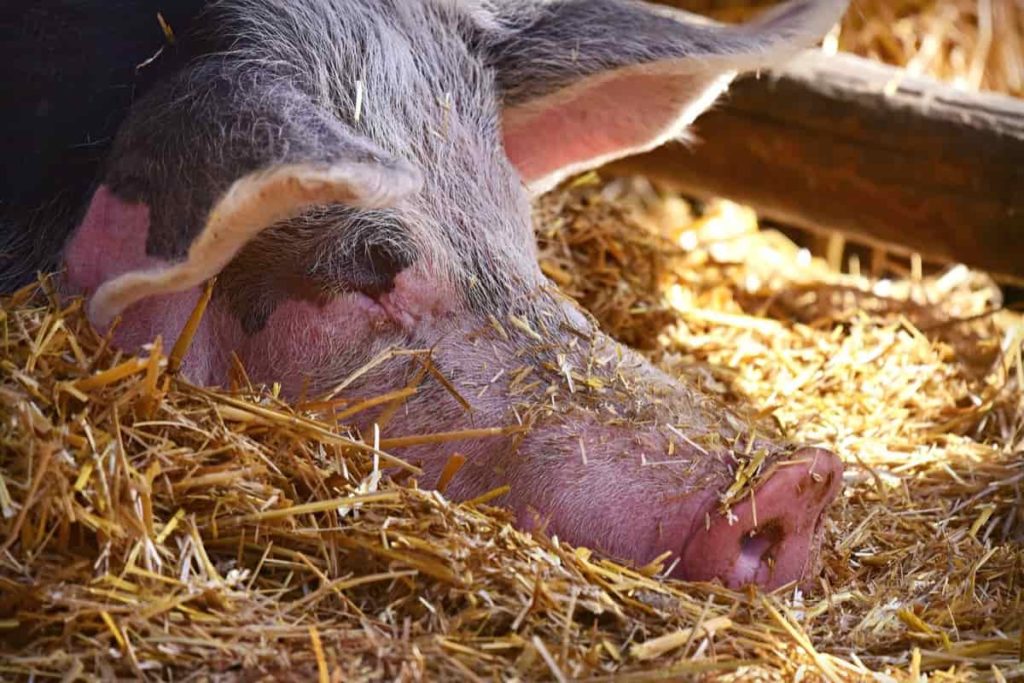
French Landrace Swine
French Landrace is a large white breed with heavy drooping ears that point forward with the Landrace feature. It is a breed that has been selected for skeletal health, heavy muscle, and growth. France is said to have an average of 19.7 pigs a year. The hams are raised, the rump is even and wide, and the loin is very muscular.
This breed has performance characteristics that come close to the Large White color with which it is constantly compared. The length of the carcass, the freedom from fat, and the quality of the bacon have been particularly commendable. The feed conversion performance has also been a very favorable point for the French Landrace.
Noir de Bigorre Pig
The Noir de Bigorre pig is the oldest known pig breed in France. Like many rare breeds, it grows much more slowly than most commercial breeds, adding only 450 grams of weight per day compared to 800g of other modern breeds. This breed has a high-fat content, with industrial breeds having only 43% lean meat compared to an average of 56%, and this high-fat content causes an unusual taste. Noir de Bigorre Pigs are not suited for deep farming and are therefore at risk of extinction, as farmers are increasingly choosing the maximum yield on quality.
Basque Pigs
Basque pigs grow more slowly and produce more fat than modern breeds. Are ideal for creating meat products. It is a breed of pig belonging to the Basque country. As its name suggests in French, this breed is pale, black, and pink.
In case you missed it: Pig Feed Chart and Pig Weight Chart for Beginners
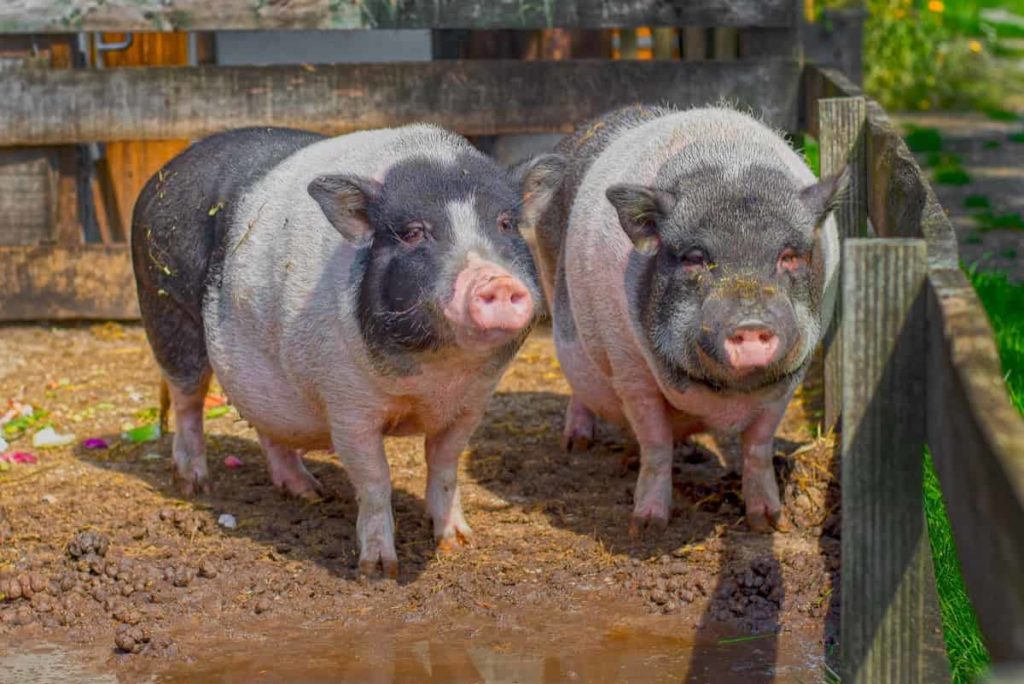
West French White Pigs
Western French white pigs weigh up to 430 kg for adults and stand 1 meter high on the shoulder. Sows have fewer piglets than other breeds but better weight: about eight piglets of 2 kg at birth and 7 kg at three weeks. In addition, their meat is delicious, and there is a huge demand for cooked meat through the charcoal industry.
Landrace Pig
Landrace Pig or Landrace Swine refers to any group of standard breeds of domestic pigs. The French Landrace is a large, white breed with heavily drooping ears that point forward with the Landrace feature. It is a breed that has been selected for skeletal soundness, heavy muscle, and growth. The hems are raised, the rump is flat and wide, and the loin is very muscular.
Management practices for pig farming in France
Management plays a significant role in most disease problems. Poor management and husbandry methods make pigs prone to disease problems. Stress factors include malnutrition, overcrowding, pregnancy, parasites, vaccinations, heat, cold, weaning, and dirty pens. Stress affects the immune system in pigs and reduces the pig’s resistance to disease agents. Cold stress, for example, is a significant predictor of diarrhea in newborn pigs.
In case you missed it: Pig Feed Formulation; Types of Pig Feed – A Full Guide
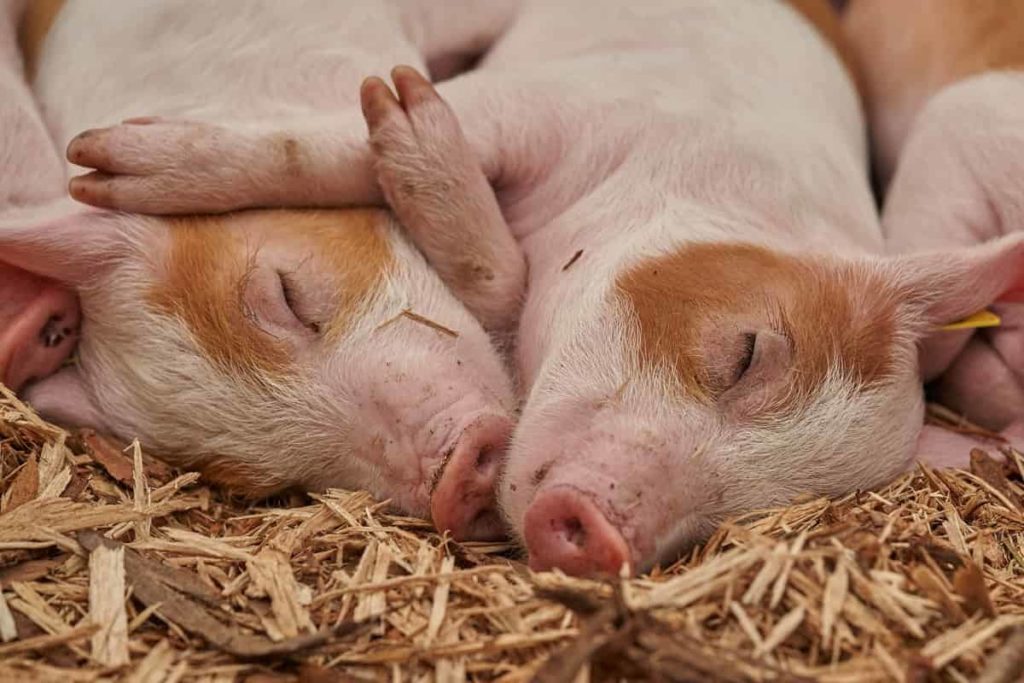
There are no heat lamps in many pig farms. As a result, piglets are exposed to cold pressures, especially if they are born on a cold night or during the rainy season. Problems such as diarrhea, enzymatic pneumonia, uneven growth, and overgrowth of pigs after weaning are often the result of overcrowding, inadequate trough space or water supply, poor food quality, unfavorable temperature, and Poor air control instead of infectious agents.
In many cases, the solution is not in the use of antibiotics or other medications. In the long run, proper housing and management practices are more important than just using drugs to control the disease.
- Economical Aquaculture: A Guide to Low-Budget Fish Farming
- 15 Common Planting Errors That Can Doom Your Fruit Trees
- How to Make Houseplants Bushy: Effective Tips and Ideas
- Innovative Strategies for Boosting Coconut Pollination and Yield
- Pollination Strategies for Maximum Pumpkin Yield
- The Complete Guide to Chicken Fattening: Strategies for Maximum Growth
- Natural Solutions for Tulip Problems: 100% Effective Remedies for Leaf and Bulb-Related Issues
- Revolutionizing Citrus Preservation: Towards a Healthier, Greener Future
- Natural Solutions for Peony Leaf and Flower Problems: 100% Effective Remedies
- Maximizing Profits with Avocado Contract Farming in India: A Comprehensive Guide
- Natural Solutions for Hydrangea Problems: 100% Effective Remedies for Leaf and Flowers
- The Ultimate Guide to Choosing the Perfect Foliage Friend: Bringing Life Indoors
- From Sunlight to Sustainability: 15 Ways to Use Solar Technology in Agriculture
- The Ultimate Guide to Dong Tao Chicken: Exploring from History to Raising
- The Eco-Friendly Makeover: How to Convert Your Unused Swimming Pool into a Fish Pond
- Mastering the Art of Delaware Chicken Farming: Essentials for Healthy Backyard Flocks
- 20 Best Homemade Fertilizers for Money Plant: DIY Recipes and Application Methods
- How to Craft a Comprehensive Free-Range Chicken Farming Business Plan
- Brighten Your Flock: Raising Easter Egger Chickens for Beauty and Bounty
- How to Optimize Your Poultry Egg Farm Business Plan with These Strategies
- Subsidy for Spirulina Cultivation: How Indian Government Schemes Encouraging Spirulina Farmers
- Ultimate Guide to Raising Dominique Chickens: Breeding, Feeding, Egg-Production, and Care
- Mastering the Art of Raising Jersey Giant Chickens: Care, Feeding, and More
- Ultimate Guide to Raising Legbar Chickens: Breeding, Farming Practices, Diet, Egg-Production
- How to Raise Welsummer Chickens: A Comprehensive Guide for Beginners
- How to Protect Indoor Plants in Winter: A Comprehensive Guide
- Ultimate Guide to Grow Bag Gardening: Tips, Tricks, and Planting Ideas for Urban Gardeners
- Guide to Lotus Cultivation: How to Propagate, Plant, Grow, Care, Cost, and Profit
- Agriculture Drone Subsidy Scheme: Government Kisan Subsidy, License, and How to Apply Online
- Ultimate Guide to Raising Araucana Chickens: Breed Profile, Farming Economics, Diet, and Care
- Bringing Hydroponics to Classroom: Importance, Benefits of Learning for School Students
- Ultimate Guide to Raising Polish Chickens: Breed Profile, Farming Economics, Diet, and Care
- Ultimate Guide to Raising Australorp Chickens: Profile, Farming Economics, Egg Production, Diet, and Care
- Silkie Chicken Farming: Raising Practices, Varieties, Egg Production, Diet, and Care
- Sussex Chicken Farming: Raising Practices, Varieties, Egg Production, Diet and Care
- Homemade Feed Formulations for Livestock: Discover Cost-effective Starter to Finisher Feed Recipes
Thank for info